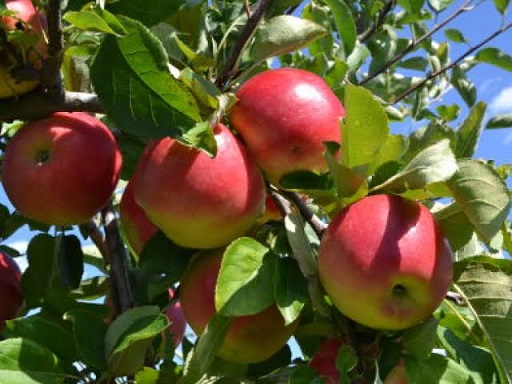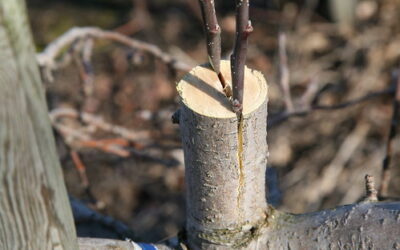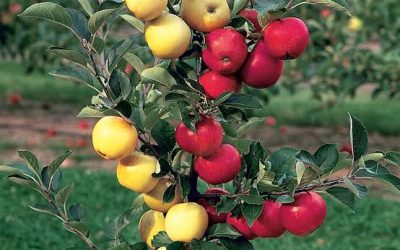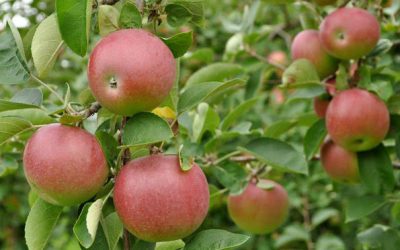5 Solutions for Unproductive Fruit Trees

If your fruit trees are proving to be unproductive whether it’s a case of no flowers, flowers but no fruits, or only tiny fruits – then it’s time to put on your farming specialties at work.
1. Pollination problems
The prime suspect in most cases is a lack of pollination. This can happen for a number of reasons, the most common being a lack of insect activity.
Bees and other pollinators are reluctant to go on the prowl for nectar when the weather is windy, rainy or cold. During bad weather insects are more likely to be active within a sheltered garden than an exposed one. If you’re able to provide screening – for instance by planting a hedge – then this is worth trying.
Bug
Frosts can kill off blossom. If frost is forecast when trees are flowering, cover them if you can with garden fleece or tulle overnight. Remove the covering during the day so insects can get in to pollinate.
Most fruit trees need a pollination buddy to set fruit successfully, so make sure your tree has a compatible partner-in-crime nearby.
It goes without saying that avoiding the use of pesticides will greatly improve your trees’ chances of successful pollination.
2. Soil conditions
Fruit trees tend to be tolerant of most soil conditions so, while it’s tempting to give them a boost of fertilizer to encourage a bumper crop, this often has the opposite effect. Quick-release fertilizer can result in weak, soft growth that is produced at the expense of flowers and fruits, and that can prove attractive to opportunistic pests.
Homemade compost, or manure from a trusted source are the best options for building soil fertility. They release nutrients at a steady rate and improve soil structure, promoting good, honest growth and fruiting. You can cloak the soil surface around your trees with compost or manure at any time, but the best time to do this is in spring or autumn.
Mulch
Grass and weeds will compete with your trees for water and nutrients, so keep them clear of the trunk for the first few years after planting to give your trees time to properly settle.
3. Pest attacks
Some insect pests such as winter moth can cause flowers and fruits to fail. Grease bands on trees over winter can prevent the wingless female winter moth from gaining access to the branches to lay its eggs. The best defence against all insect pests, though, is to cultivate a garden that encourages biodiversity, so that beneficial bugs can police the pests for you.
Hungry bullfinches and other birds will sometimes steal the developing buds of fruit trees. If your trees are small enough, some jail time may be in order – for the trees, not the birds! Use canes or stakes to support netting and prevent it from touching the foliage. Make sure it reaches the ground so that birds can’t get in from underneath.
4. Pruning errors
Pruning is often regarded with some trepidation, but a few judicious cuts can really invigorate a struggling tree.
Over-pruning stimulates lots of lush new growth at the expense of fruits. The key is to only cut out what are known as the 3Ds – diseased, dying and dead wood – plus any crossing branches or branches that point inwards.
Pruning
The aim is to encourage the tree to grow into an open structure that allows air and light to reach all parts of the plant. This will encourage good fruiting and ripening, and reduces hidey-holes for nefarious pests to lurk in.
5. Biennial bearing
Farmers often complain that their trees fruit exceptionally well one year, and then produce nothing for the next year or two. This is not unusual. It’s a phenomenon known as ‘biennial bearing’, where a tree exhausts itself from fruiting so extravagantly one year – sometimes to the point where branches snap under the weight of the fruit – that it needs to take a complete break the following year.
The secret to avoiding this feast and famine situation is to thin fruits by hand every year. It feels wrong, but it’s for the best – and it’s really just an extension of the natural process commonly known as the ‘June drop’, where trees shed excess fruits to reduce the strain.
If your young trees have never fruited, it may simply be the case that they are still not quite mature enough to do so. Even in ideal conditions, it’s normal to wait two to four years after planting for your trees to begin producing fruits.
Diagnosing fruit tree productivity problems is far from straightforward. By considering the points above you can deduce which culprits are responsible, and can put in place measures to improve matters next time round.


